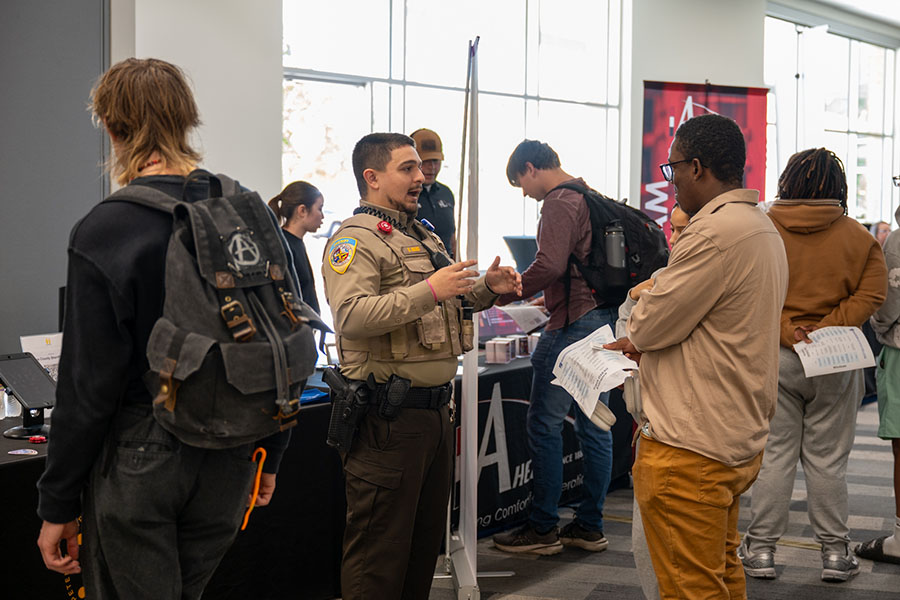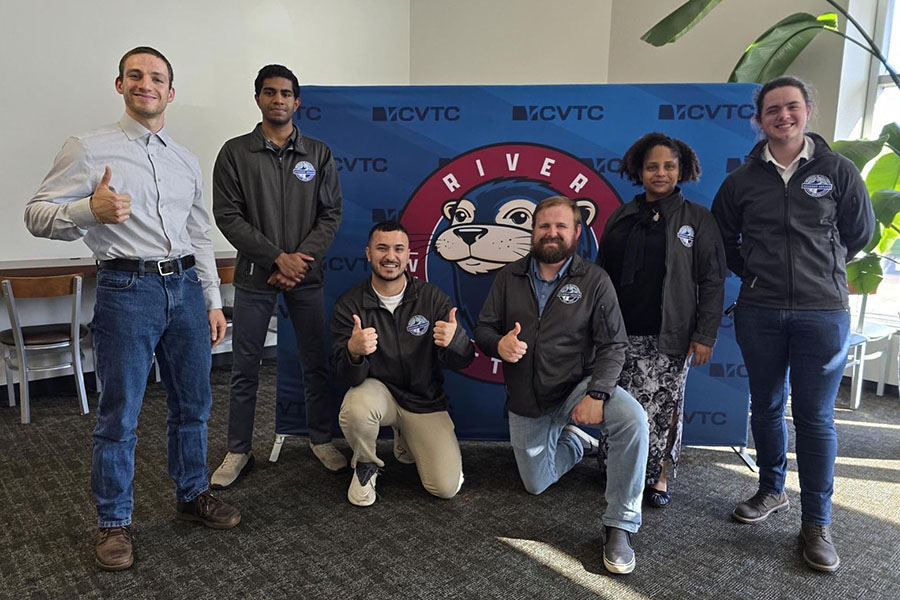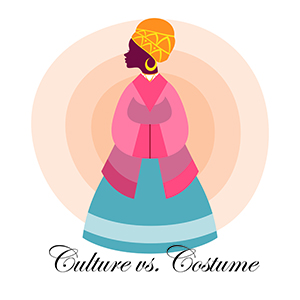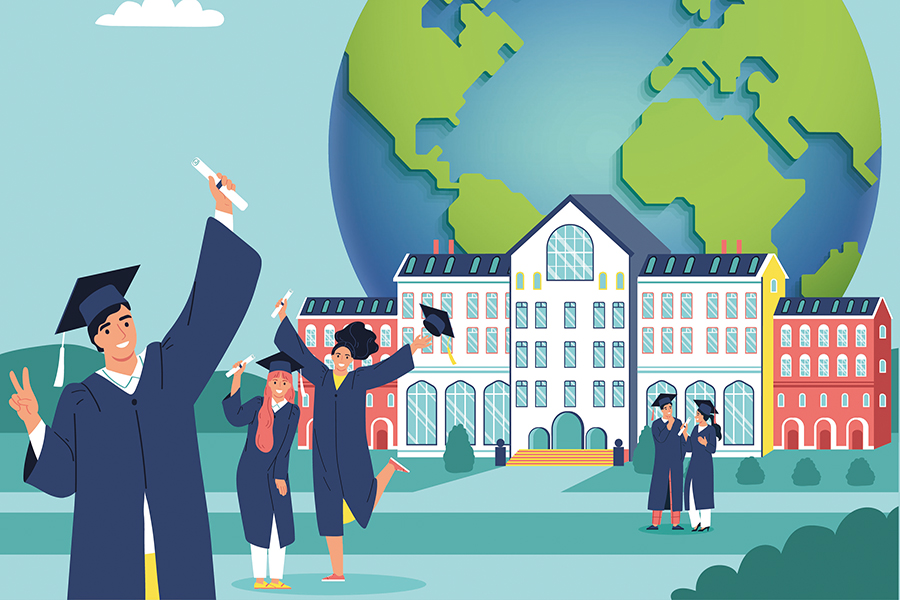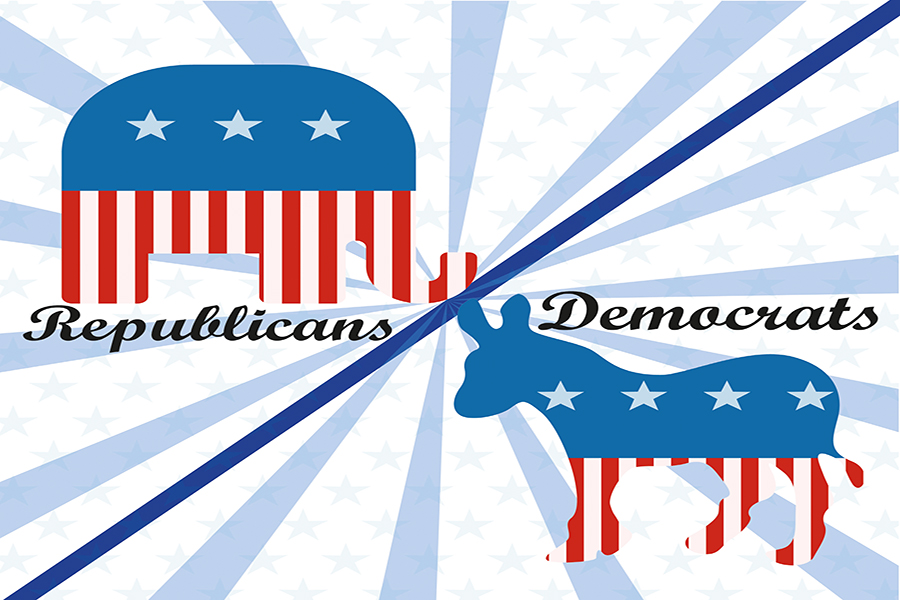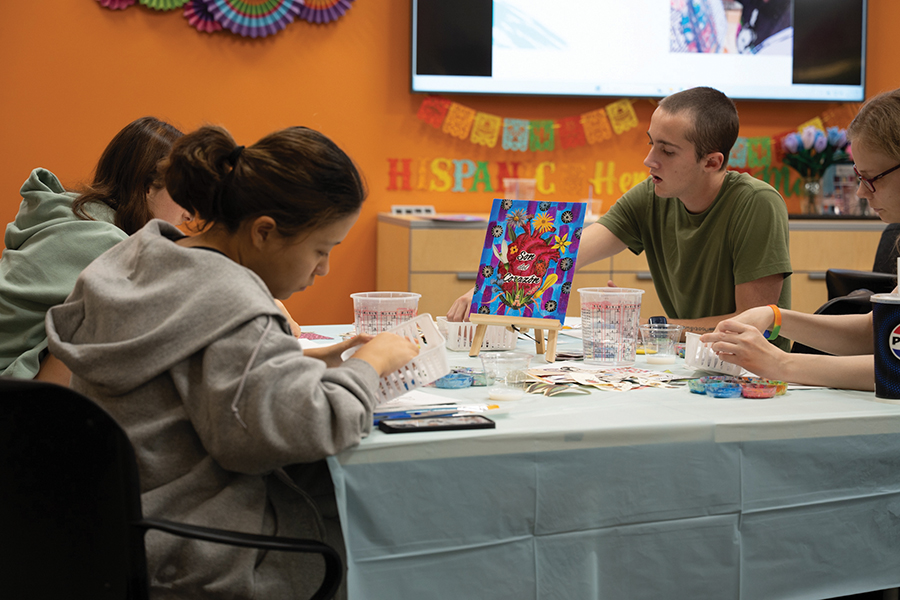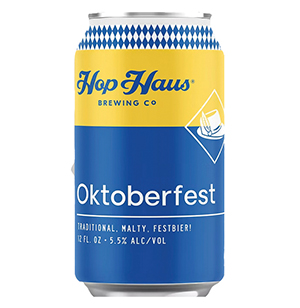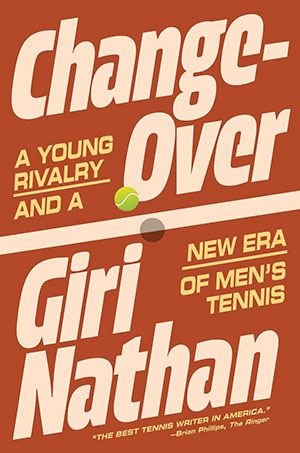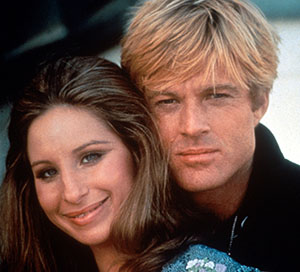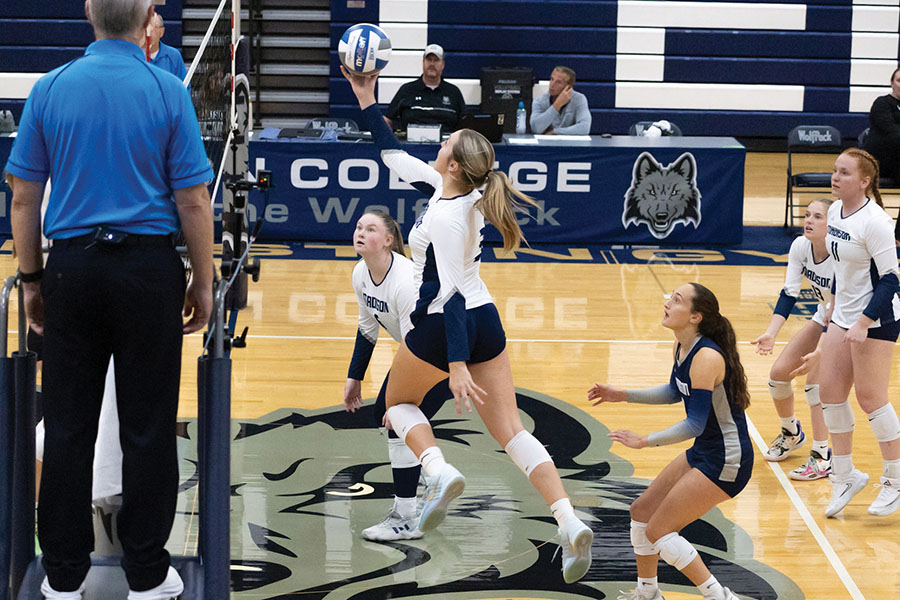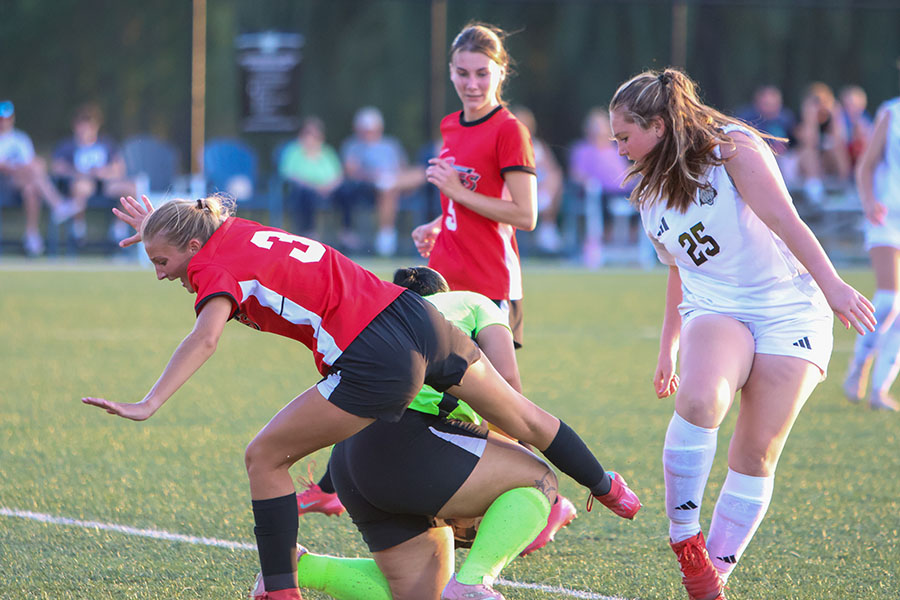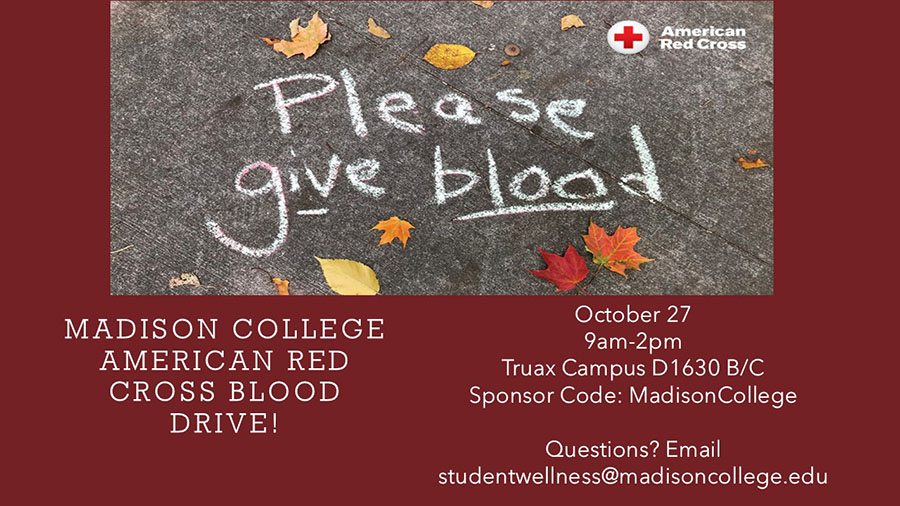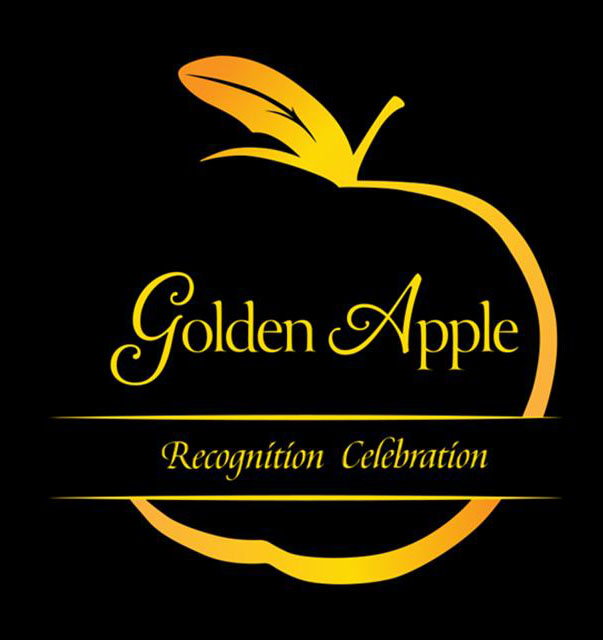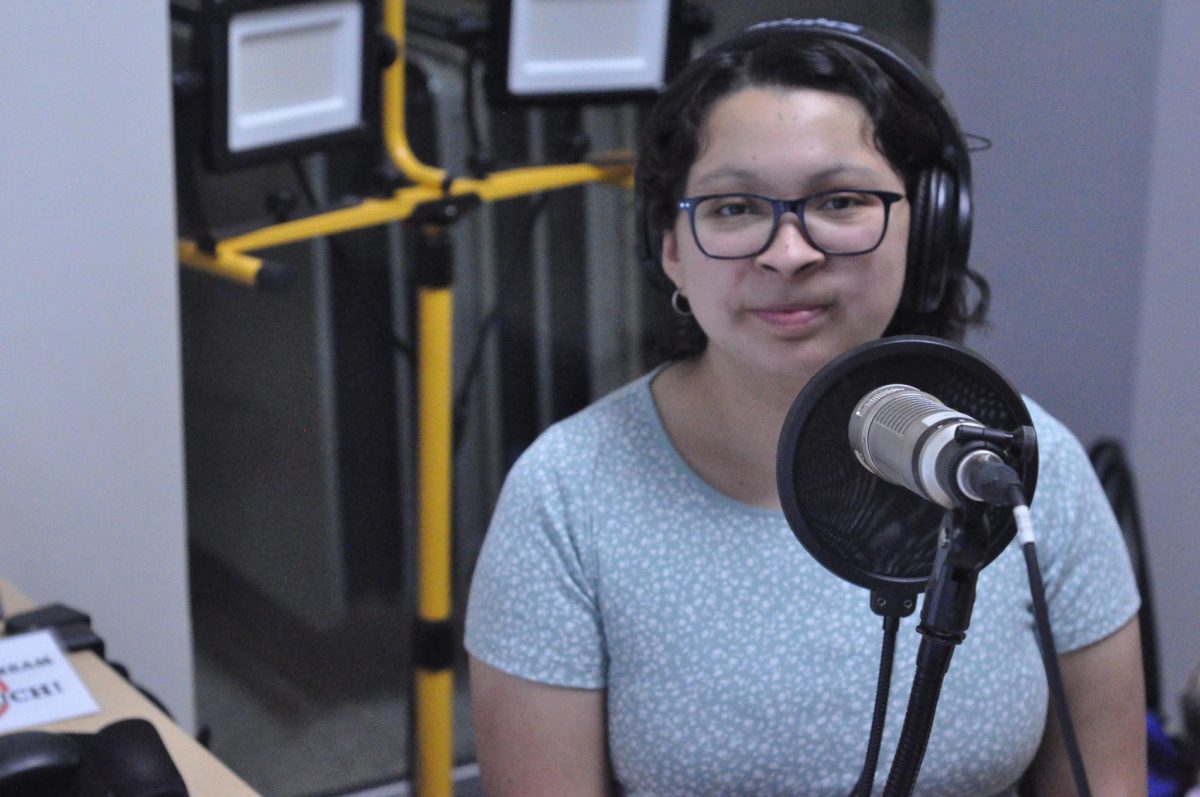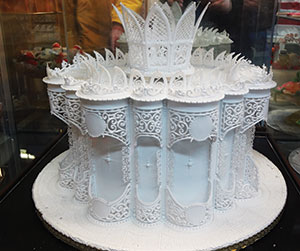When the call came in, Baking and Decorative Arts instructor Suzanne Daly was beside herself. She had baked since she was a girl and had created her first wedding cake at age 12. Now the top sugar artist in the world had requested her presence for a private class in England.
The artist was not only at the top of his industry, but also a cake decorator for British royalty.
Eddie Spence has created cakes for several members of the royal family including wedding cakes for Princess Margaret, Prince Charles and Lady Diana, and Prince Andrew and Sarah Ferguson.
Spence was chosen by Queen Elizabeth II to create her Golden Wedding Anniversary and Diamond Jubilee celebration cakes. In 2000, he was awarded the title of the Most Excellent Order of the British Empire by the Queen (MBE).
Spence, it may seem, is royalty himself in the world of sugar art.
“It was extremely humbling to know that I would be not only in the presence of such a great artist, but to be learning from him,” said Daly.
Daly was chosen as one of five artisans from around the world to participate in the final private classes Spence would teach. The other students came from the United States, Canada and Holland. This class was open by invitation only to top artists in the field.
According to his book “The Art of Royal Icing,” Spence has taught the art for 50 years. The type of piping Spence uses is rare in today’s world with the popularity of fondant and other techniques. Daly was determined to learn as much as possible in the short amount of time she would be in England for the class.
Royal icing typically looks like regular frosting, but once it is piped the white icing becomes hard. This type of icing allows for elaborate designs to be piped directly onto a cake or piped separately before adding the dried icing to the cake.
Spence passed on his techniques for creating scrolls, floating collars, pressure piping and over piping to the private class of five students. Daly was surprised by how small differences in the position of his fingers changed how icing was piped out of a bag. She hopes to pass on the techniques she learned to her students at Madison College.
Daly feels Spence not only taught her new skills, but also how to be a better instructor. “Sometimes putting yourself back in role of the students helps you have better understanding of what you should be as an instructor,” she said.
Spence bestowed another special gift to Daly. He shared patterns and templates he had never given anyone else before. She sensed he felt a great urgency to carry on his legacy into the future.
Baking program director Punky Egan understands just what this experience meant for Daly. “It was such an honor. There are cake decorators around the world and she was selected,” said Egan.
A cake made by Spence is typically kept for prosperity sake and not always eaten. His cakes are viewed as a work of art to be displayed at places such as Squires Kitchen International School, where Daly visited while in England. The designs are often created for competitions and not personal cakes for individuals, except when the Queen commands.
The process for creating a cake for royalty is extensive. First, Spence submits a drawing of the cake design for approval. The Queen’s advisers often offer suggestions for changes before official approval is granted. Two identical cakes are required for royal functions. One cake is on display for the public, while the second cake is privately viewed by the family.
“You not only have the pressure of making one cake, but you have the pressure of making two cakes,” noted Daly.
Back at Madison College, Daly appears to still be amazed by her good fortune to have attended a class with Spence. She views the opportunity as a privilege and is eager to share what she has learned.
“I am really looking forward to being able to use the skills I learned from Eddie in not only my own personal skill set, but to be able to share here at school as well as around the United States,” Daly said.


